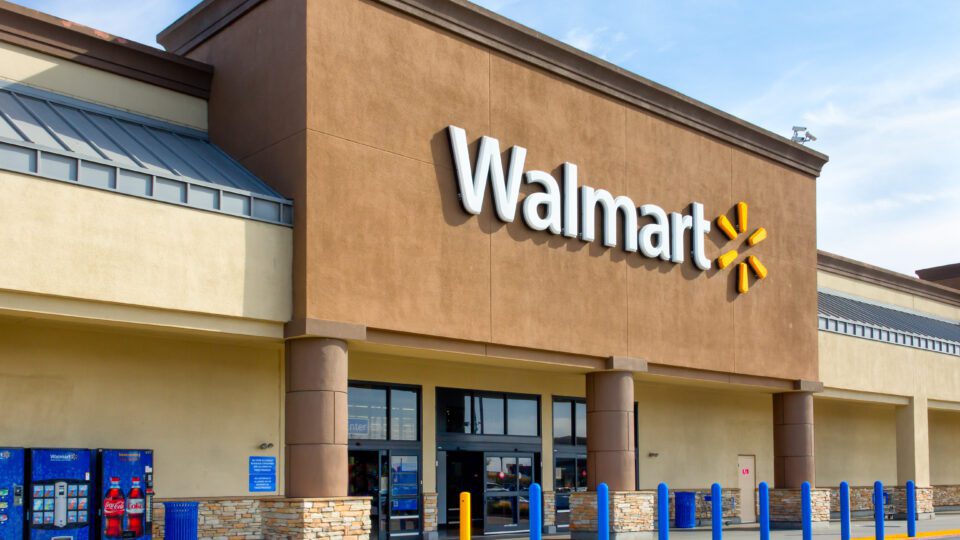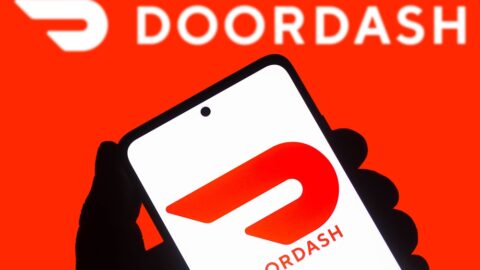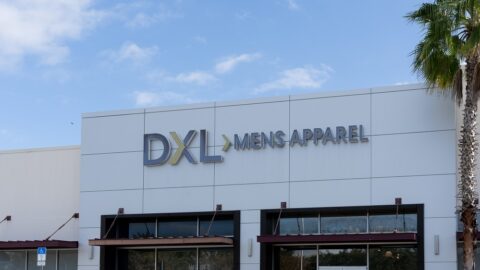Inflation continued to loom in Q3 2022 and it has proven to be the defining force for many retailers. Walmart’s comparable sales rose 8.2% as shoppers flocked to the retail giant for inexpensive groceries, while Target’s comparable sales rose 2.7% as it engaged in deep discounts to clear excess inventory. Price-conscious shoppers proved to be to a double-edged sword for ThredUP — the retailer saw 7% sales growth year-over-year, but margin and profit both fell as deep discounts by traditional retailers drove competition.
Walmart’s overall sales rose nearly 9% in Q3 as it attracted shoppers across all income levels. The retailer previously noted that it expected a surge in grocery sales, but while the company warned of an associated hit to margins, its overall success enabled the retailer to raise its full-year outlook to net sales growth of approximately 5.5%.
Revenue of $152.81 billion was well above the $147.8 billion expected by analysts, which led to a 6% increase in share price after results were released on Nov. 15. However, Walmart posted a net loss of $1.8 billion, down from a $3.1 billion profit in Q3 2022, due to the recently announced $3.1 billion settlement made to resolve potential opioid-related lawsuits from state, local and tribal governments.
Shoppers who turned to Walmart for groceries also have been buying less expensive food items, such as hot dogs, beans and peanut butter rather than pricier meats, CFO John David Rainey told CNBC. They also are selecting less expensive versions of products such as baby items and baking goods, including private label items.
“Pocketbooks are stretched,” said Rainey on a call with CNBC. “People have less discretionary income or less disposable income to spend on things — and so they’re looking for value.”
The pressure is impacting shoppers across the economic spectrum: approximately 75% of Walmart’s market share gain in food came from households that make more than $100,000 a year, repeating a pattern seen in Q2 2022.
Walmart also took steps to reduce its inventory glut by aggressively marking down merchandise in July — a move made in response to shoppers buying fewer discretionary items. Rainey attributed 70% of the increase to inflation rather than Walmart bringing in new units. The effort worked, and Walmart’s inventory was up only 13% year-over-year for Q3, compared to 26% in Q2 and 32% in Q1.
Other bright spots for Walmart include its U.S. ecommerce business, which grew 16% year-over-year, and its global advertising business, which saw more than 30% growth. Comparable sales at Sam’s Club jumped 10% and its member count hit an all-time high.
While Q3 was strong, Q4 may prove to be more uncertain. Inflation is continuing to hit wallets and more money is being spent on travel and experiences, further cutting spend on discretionary items. Walmart anticipates 3% comparable sales growth in the U.S., and Rainey noted that “the consumer could slow spending, especially in general merchandise categories, given persistent inflationary pressures in food and consumables.”
Target Clears Out Excess Inventory but Takes Margin Hit
Target faced the same pressures as Walmart, but its profits fell by about 50% as it worked to get rid of excess inventory. Despite this effort, sales have slowed as the retailer headed into the holidays, and Target lowered its expectations for the season due to continued volatility.
Price sensitivity also played a major role in Target’s performance, but the results were more negative than what Walmart experienced. Target saw families making trade-offs between what they wanted and what they needed, and the retailer expects this behavior to carry over into the holiday season. This behavior intensified during the final two weeks of October and has been similar to what Walmart reported. Shoppers purchased fewer full-priced items and turned to smaller packages, value packs and private label brands.
Promotions helped Target clear out its excess inventory, which was up 14% year-over-year in Q3 compared to 36% in Q2 and 43% in Q1, but the discounts needed to accomplish this took their toll on margins. The retailer recorded a 3.9% operating margin rate, well below its 6% goal. Net income fell to $712 million in Q3 2022, down from nearly $1.5 billion in Q3 2021.
Rising retail crime also impacted results. Shoplifting was up 50% year-over-year, mainly as a result of organized retail theft, and losses for the fiscal year have reached more than $400 million.
Despite the heavy pressure, Target saw 1.4% traffic growth across its stores and website and volume growth across all five of its key merchandise categories, led by beauty, food and beverage and household essentials. Additionally, it saw record sales volumes for back-to-school, back-to-college and Halloween.
The retailer also revealed plans to cut up to $3 billion in costs over the next three years to boost efficiency after two years of major sales gains (Target’s sales grew approximately 40% during the COVID-19 pandemic). Officials declined to provide specifics but noted that the company does not plan layoffs or a hiring freeze. This is in contrast to the actions taken by Amazon, which had a similar growth trajectory during the pandemic.
“While we’re ready to deliver exceptional value for our guests this holiday season, supported by the decisive inventory actions we took earlier this year, the rapidly evolving consumer environment means we’re planning the balance of the year more conservatively,” said Brian Cornell, Chairman and CEO of Target in a statement. “We’re also taking new actions to drive efficiencies now and in the future, optimizing our operations to match the scale of our business and drive continued growth. The strides we have made in recent years to build a truly differentiated, guest-centered retail offering, punctuated by a balanced, multi-category portfolio, positions us well to navigate in any environment.”
In the short term, Target expects the economy to continue weighing down performance during the holiday season. The retailer projected a low-single-digit decline in comparable sales and an operating margin rate of about 3% for Q4 2022. However, the company is combatting this difficult environment with expanded partnerships such as Disney shops.
ThredUP Benefits From Surging Resale Interest, but Competition is Rising
Resale is one of retail’s hottest areas due to its ability to simultaneously save money and the environment, and ThredUP benefitted from this trend in Q3 2022. The retailer’s number of active buyers grew 18% year-over-year to 1.7 million while orders jumped 24% to 1.6 million. However, the deep discounts offered by Target, Walmart and other companies looking to clear out excess inventory took their toll on ThredUP’s performance.
“I want to take a moment to address the question I frequently get asked around how resale should fare in a recession,” said James Reinhart, CEO of ThredUP on a call with analysts. “’James, shouldn’t it do well at a time like this?’ Well, the answer is yes, we believe resale should do quite well in a typical recessionary environment. But it’s not that simple this time around. That’s because over the past 12 months, there’s been a massive buildup of apparel… at a time when retail inventories are overflowing with apparel, which is resulting in significant price compression in the apparel market. And while we don’t have the same inventory risks that other retailers have, we’re not immune to the pressure on prices.”
ThredUP expects profitability to improve in 2023, after traditional retailers sell through their excess inventory and resale can once again compete on price. In the meantime, its net loss fell to $23.7 million, or a negative 34.8% of revenue, for Q3 2022, compared to a net loss of $14.7 million in Q3 2021.
Growing interest in resale is helping ThredUP expand by partnering with mainstream retailers like Hot Topic and Francesca’s, as well as designers such as sustainability-focused Zero Waste Daniel. ThredUP expects apparel resale sales to reach $82 billion by 2026, more than double the $35 billion it achieved in 2021.
However, the retailer will face competition from competitors both new and old. Amazon isn’t involved in apparel resale yet, but the ecommerce giant has taken the plunge into resale in general through a partnership with What Goes Around Comes Around, an authenticated high-end vintage reseller. Additionally, Goodwill has launched an online marketplace, putting one of the oldest and best-known resellers in direct competition with digitally native upstarts in the space.













